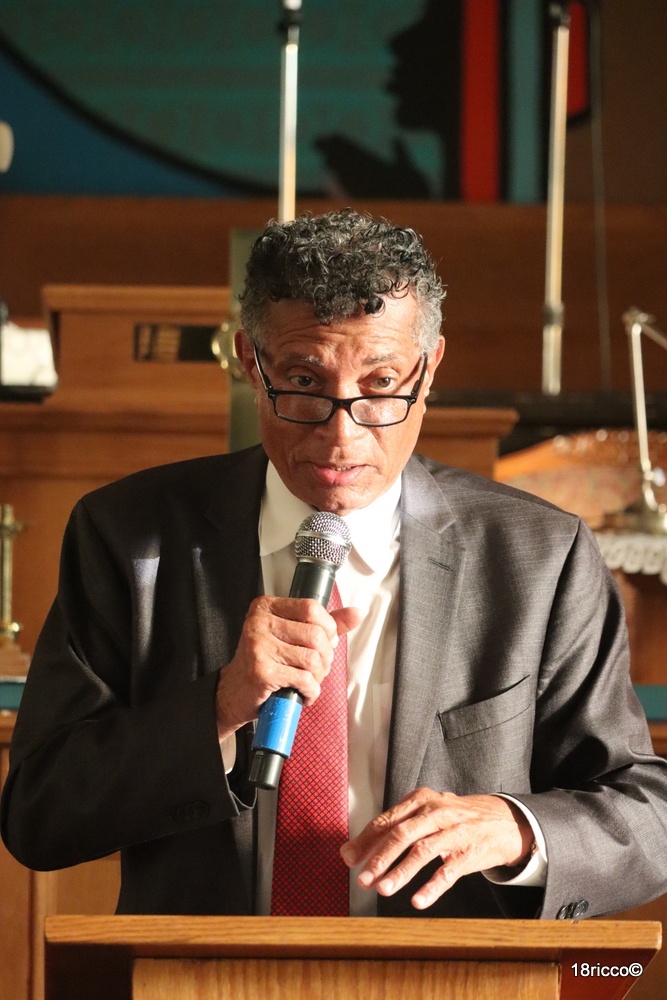PEGGY WARD (PHOTOS BY J.L. MARTELLO)
Some people know about it, but many do not.
September 7, 1923, was the date that Johnstown’s mayor, who was White, gave every African American and Mexican immigrant who had lived in the city less than seven years, 24 hours to leave. About 2,000 people were uprooted.
Why did Joseph Cauffiel, the mayor, who was also the local sheriff, do it? Apparently, a Black man, Robert Young, who had been drinking alcohol, shot and wounded a Johnstown police officer in the city’s Rosedale neighborhood. Young then ran into a nearby shed where he was engulfed in a gun battle with other officers, striking several officers. Young died, and so did three officers. One other officer died days later.
This move by the mayor obviously strained Black-White relations even more in Johnstown at the time, and some historians believe that Black prosperity in Johnstown would be much better today if not for Mayor Cauffiel’s edict.
According to the Johnstown Tribune-Democrat, the reason the mayor had the seven-year cutoff line was because “it coincided with the time when the Great Migration started to impact the city, as mill owners and executives actively recruited Black people from the South – where a boll weevil infestation had devastated the cotton industry – as a source of cheap labor as many able-bodied men went off to fight in World War I.”
In Pittsburgh, a number of groups, including the Black Political Empowerment Project, NAACP Pittsburgh Chapter, and the Alliance for Police Accountability, met at Trinity AME Church, in the Hill District, on Sept. 6, to commemorate the 100-year anniversary of the banishment. The following day, the United Women in Faith held an event at Johnstown’s Central Park to commemorate the banishment. Members of the local Dr. Edna B. McKenzie Branch of the Association for the Study of African American Life and History were present at both events.

TIM STEVENS
Tim Stevens, Chairman and CEO of B-PEP, said he can see similarities of 1923 to 2023. “We have a former president (Donald Trump) who has, for the past several years, ongoingly fermented hate and distrust in this country between the races, between the parties, and ill feelings of those of the LGBTQ community and to our immigrants,” Stevens said at the Sept. 6 event at Trinity AME. “We have a very activist-leaning Supreme Court which, instead of protecting the rights of women, Black and brown people and the LGBTQ community, has instead done just the opposite.”
Stevens talked about the Supreme Court’s repeal of Affirmative Action, which helped admit more Blacks into colleges, or reversing the Roe v. Wade decision, which now gives more power to each state pertaining to banning or legalizing abortions.
“We feel that the threats to democracy of 100 years ago are being revisited on nearly a daily basis throughout the United States of America,” Stevens said.
Peggy Ward, the Western Pennsylvania Conference President of the United Women in Faith organization, said that “people in Johnstown say, ‘I never knew that this happened.’”
That’s because most injustices aren’t put on billboards and aired on local television stations. It isn’t something that any city would be proud of, even though history is history.
“The Pittsburgh Courier got wind of this, picked it up and helped to bring it nationally,” Ward said of the banishment in 1923. “…The NAACP, Marcus Garvey, the Mexican government, everyone was weighing in on how bad” it was. “This is a very disturbing part of our past,” she said, but in some ways it still mirrors the present-day, “which is the reason to bring it forward.”
Local journalist Cody McDevitt, who is White, published a book in 2020 entitled, “Banished From Johnstown: Racist Backlash in Pennsylvania,” likely the most comprehensive account of the banishment to date.
The banishment “was used by the South to send advertisements up to Johnstown, telling Black people you’re so much better off here, come on home,” Ward said.
Ward, one of the first speakers at the Sept. 6 event at Trinity AME, called the Johnstown banishment “one of the most horrific racial injustices in Western Pennsylvania.”
Today, Johnstown is home to 18,000 residents, 17 percent of which are Black (roughly 3,075). Decades ago, upwards of 60,000 people lived in Johnstown, which is about an hour and a half east of Pittsburgh, in Cambria County.
Stevens, the B-PEP Chairman and CEO, during his remarks, told the assembled crowd that in 1923, the Pittsburgh Post-Gazette reporter Len Barcousky labeled the banishment with this headline: “A reminder that the unthinkable can and has happened.”

